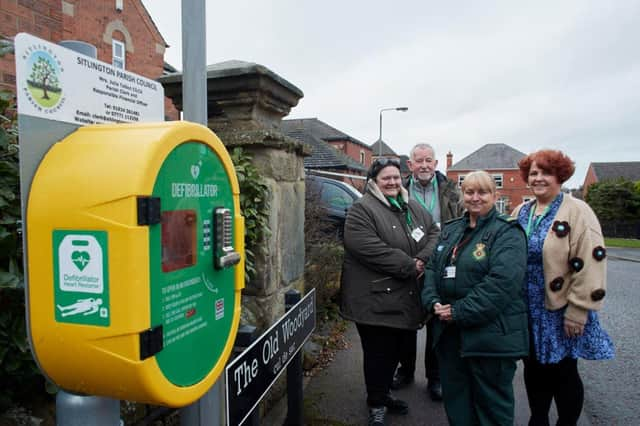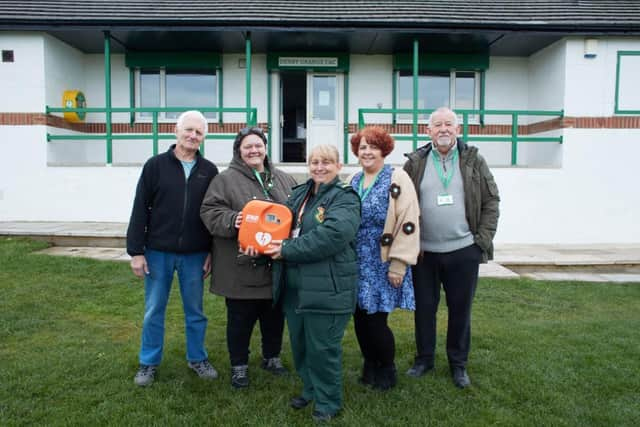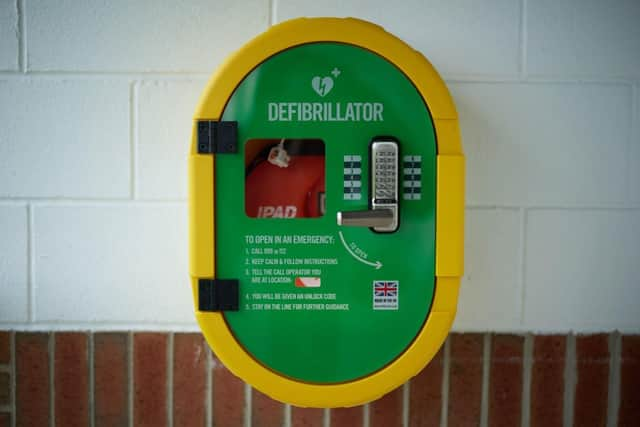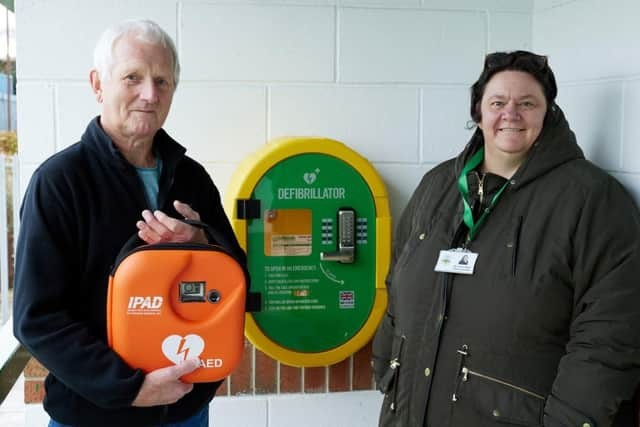Not missing a beat....parish leading the way in helping to save lives


Thankfully, Danish star Christian Eriksen was revived, but the fallout sent shock waves across the world, and with it, soaring sales of defibrillators as millions watched paramedics use the life-saving equipment on the stricken player.
In a quiet corner of West Yorkshire, they’ve been ahead of that curve for some time.
Advertisement
Hide AdAdvertisement
Hide AdSitlington Parish Council, which covers a small cluster of villages and hamlets, has recently installed its eighth machine. There is a ninth at the local school, and two more are in the pipeline for the parish.


As a possible comparison, a quick Google search suggests that’s more than Wakefield city centre and its immediate densely-populated suburbs has altogether - although there is no up-to-date definitive list available yet it would seem.
Still, it sounds like a Sitlington is at the forefront, covering an adult population of just 5,000, give or take.
“Strangely enough, we had agreed about getting more just before then (the collapse of Eriksen), we had them on order,” explained council chair, Teresa Allot.
Advertisement
Hide AdAdvertisement
Hide Ad“We’ve never had to wait once we’d ordered them, they usually come on the same day, but after that incident there must have been quite a backlog.”


Coun Allot says the idea of installing a single defibrillator several years ago “didn’t really take off”, at first anyway.
The matter was raised again by councillors, and they agreed to install four in 2019, at a cost of around £1,400 each, quite an outlay for a small council.
But the need for the machines then became very apparent, after three of the four machines were used in a single day.
Advertisement
Hide AdAdvertisement
Hide AdThen tragedy struck at Denby Grange Cricket Club when an umpire collapsed and sadly died. The decision was taken to install more.


Coun Allot says the high number of defibrillators simply comes down to the area’s rural terrain with the amount of walkers and ramblers it attracts. Ambulance times from Wakefield is another key factor.
She said: “The fact we are quite hilly and quite rural, plus it could take a while for an ambulance to get here.
“We always want to get more in the parish because when you look at the geographical area, we simply can’t justify missing out one part of it.
Advertisement
Hide AdAdvertisement
Hide Ad“Part of the plan was that no matter where you are in Sitlington, you are close enough to a defibrillator


“With ambulance waiting times, there’s a knock-on effect so any help we can give we will.
“It’s something we are proud of, something that we’ve achieved. When people ask councillors what they do for the area, I say we’ve done this.”
The machines are so technically advanced, they provide step-by-step audible instructions, and will not work if the patient does not require the defibrillator shock.
Advertisement
Hide AdAdvertisement
Hide AdBut there is still a fear factor, added Coun Allot, with the council planning two introductory classes in March.
Coun Allot said: “It’s something adults and children need to learn. People are scared of them, they think they will get electrocuted and hurt somebody, but they can’t.
“Every age group needs some kind of basic training.”
The original four machines were installed at the Little Bull in Middlestown, the Black Swan at Overton, the shop in Netherton and village hall in Netherton.
They now have defibrillators at Denby Grange Cricket Club, Connies Cafe at Horbury Bridge, New Hall Approach in Overton and Stocksmoor Road in Midgley.
Advertisement
Hide AdAdvertisement
Hide AdTwo are now planned for Coxley Engine House in Middlestown, and Hartley Bank Community Field.
The machines work by detecting if the patient’s heart has gone into cardiac arrest.
If it has, it sends a brief electrical current through the heart to restore its natural rhythm.
Yorkshire Ambulance Service’s defibrillator co-ordinator Joanne Watson praised Sitlington for their approach to installing the life-saving machines, and encouraged others to follow suit.
Advertisement
Hide AdAdvertisement
Hide AdJoanne, who covers the whole of the Yorkshire area, said: “It’s a really proactive area. It’s great to see this level of commitment.
“Access to these machines is really beneficial.
“Ideally, we would like to see a life-saving community public access defibrillator (CPAD) in locations which don’t have another device within a 600-metre radius.”
She said that since the high-profile incident involving Christian Eriksen, there had been a “massive wave of interest”, particularly at sports clubs.
Data shows less than one in 10 people survive a cardiac arrest outside of hospital, partly because of bystanders’ reluctance to perform CPR and a lack of defibrillators.
Advertisement
Hide AdAdvertisement
Hide AdJoanne added: “What happens in the first few moments of a cardiac arrest.
“A bystander performing CPR and using a defibrillator can increase the patient’s chances of survival by two to four-fold.”
“Defibrillators give a high-energy electric shock to the heart to restore the heart’s normal rhythm. The devices are easy to use, provide audible instructions to the user and will not deliver a shock unless it is required so users needn’t be concerned about causing any harm to the patient.
“While no training is required to use the equipment, there familiarisation sessions to teach CPR to attendees.”